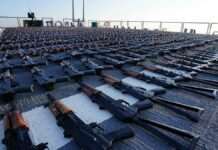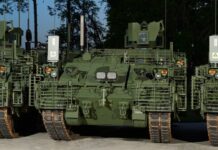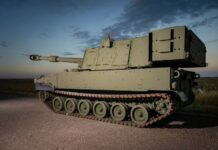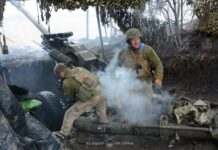The US Army has selected a winner for its Next Generation Squad Weapons (NGSW) programme to replace the M4/M4A1 carbine in the form of the Next Generation Squad Weapon-Rifle (NGSW-R) and the M249 Squad Automatic Weapon (SAW) in the form of the Next Generation Squad Weapon-Automatic Rifle (NGSW-AR).
Background
The NGSW programme commenced in October 2018, replacing the previous Next Generation Squad Automatic Rifle (NGSAR) programme, which was a simple M249 replacement effort.
The NGSW winner was SIG Sauer and they will provide the XM5 rifle for NGSW-R and the XM250 automatic rifle for NGSW-AR requirements. This marks the second major US Army small arms win for SIG Sauer, previously they won the 9×19 mm M17/M18 Modular Handgun System pistol programme. Both the XM5 and XM250 will be equipped with the SIG Sauer SLX suppressor and will fire the 6.8 Common Cartridge family of ammunition. The ammunition, developed by SIG Sauer, is a 6.8×51 mm round featuring a hybrid metallic case that offers increased velocity and on target effects.
The NGSW Winner
The initial delivery order for SIG Sauer is valued at US$20.4M. This amount is said to cover the supply of 25 XM5 and 15 XM250 systems, plus associated ammunition for continued testing. The contract ceiling value is US$4.7Bn covering the US Army’s intention to purchase a total of 107,000 XM5 rifles and 13,000 XM250 automatic rifles, a confirmed order timetable and delivery dates for these weapons is yet to be established. In fact, the contract actually covers the potential purchase of 250,000 weapons covering more weapons for the US Army, other US services and possible Foreign Military Sales (FMS) customers. Operational testing with the new weapons will commence in late 2023/early 2024 and the first US Army unit to be fully equipped with the XM5/XM250 will be operational most probably in the third quarter of 2024.
Ammunition
As regards ammunition for the XM5 and XM250, in January the US Army Lake City Army Ammunition Plant in Independence, Missouri, which is operated by Winchester, won a contract to prepare for manufacturing facility requirements analysis and production capacity planning for the 6.8×51 mm NGSW round. However, it is expected that Lake City will only be producing NGSW ammunition in volume in FY25 or FY26. Until that point, SIG Sauer will be the source for the 6.8 Common Cartridge family of hybrid ammunition. The US Army is also looking for a conversion kit for their M240 medium machine guns (US version of the FN MAG), to allow M240B (standard barrel) and M240L (short barrel) weapons to fire the new 6.8×51 mm round.
Another key element of the NGSW programme, the Next Generation Squad Weapons – Fire Control (NGSW-FC) system was awarded in January, when Vortex Optics, received a 10-year firm fixed price, Follow-on Production Other Transaction Agreement (P-OTA) with a maximum ceiling value of US$2.7Bn covering the production and delivery of up to 250,000 XM157 NGSW-FC systems over a 10-year period. According to the US Army: “The XM157 integrates a number of advanced technologies, including a variable magnification optic (1X8), backup etched reticle, laser rangefinder, ballistic calculator, atmospheric sensor suite, compass, Intra-Soldier Wireless, visible and infrared aiming lasers, and a digital display overlay.”
Previous Weapons
The M16 family, of which the M4/M4A1 carbines are the latest iteration, has been in service since the early 1960s, and the US Army has been trying to develop an M16 replacement for more than 40 years. It would appear that it has finally managed to achieve this goal with the XM5. The impetus for developing and fielding these new weapons comes from recent combat experience and the acknowledgement that 5.56x45mm round of the M4 and M249 has reached the limit of its development potential. The new weapons offer accurate fire at extended ranges and the ability to defeat hard targets, such as those wearing body armour.
The arrival of the NGSW weapons and their 6.8x51mm round is truly significant in that it will force those militaries in the process of seeking a new assault rifle, such as the British and the Canadians, and perhaps even the Germans to consider options beyond 5.56x45mm NATO weapons. As things stand at present, the US Army has opened a new era in small arms.
David Saw














